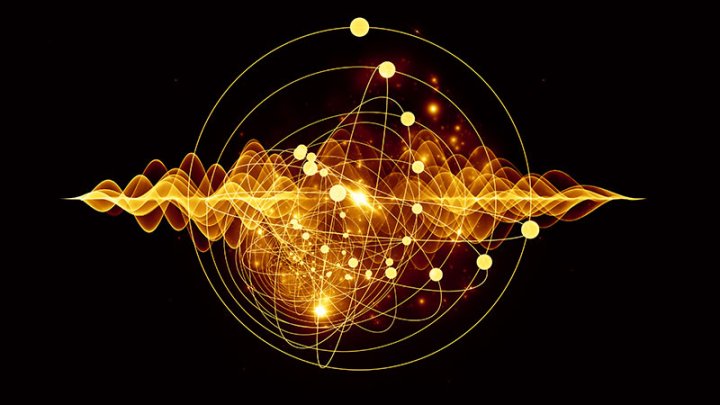17 Equations That Changed the World: A Journey Through Mathematical History
Published:
Throughout history, a handful of powerful equations have fundamentally reshaped our understanding of the universe and our place in it. These aren’t just abstract symbols; they are the intellectual bedrock upon which our modern world is built. They have given us the tools to build skyscrapers, send rovers to Mars, and unlock the secrets of the atom. This blog post, “17 Equations That Changed the World,” will take you on a journey through the most impactful mathematical discoveries, from ancient geometry to modern chaos theory. We’ll explore each equation, who discovered it, and why it holds such a pivotal place in human history.
From the familiar $a^2 + b^2 = c^2$ to the mind-bending complexity of the Schrödinger equation, these formulas are a testament to human ingenuity. They have allowed us to predict the motion of planets, harness electricity, and even quantify information itself. Understanding these equations is not about being a mathematician; it’s about appreciating the power of a language that can describe reality with breathtaking precision. This post will serve as your guide to the most significant intellectual breakthroughs of all time, showing how a few symbols on a page can lead to world-altering innovation.
1. Pythagoras’s Theorem ($a^2 + b^2 = c^2$)
Discovered by: Pythagoras, c. 530 BC
This ancient theorem is the foundation of geometry. It states that in a right-angled triangle, the square of the hypotenuse (the side opposite the right angle) is equal to the sum of the squares of the other two sides. This simple formula is essential for everything from architecture to navigation and remains one of the most recognizable equations in all of mathematics.
2. Logarithms ($log_x y = \frac{log y}{log x}$)
Discovered by: John Napier, 1610
Logarithms are the inverse of exponentiation. They allowed complex multiplication and division problems to be simplified into simple addition and subtraction. Before the advent of computers, this invention revolutionized fields like astronomy, allowing scientists to perform calculations that would have otherwise been impossibly long and error-prone.
3. Calculus ($\frac{df}{dt} = \lim_{h \to 0} \frac{f(t+h) - f(t)}{h}$)
Discovered by: Isaac Newton, 1668
Calculus is the mathematical study of change. It provides the tools to understand rates of change (derivatives) and the accumulation of quantities (integrals). Newton’s discovery of calculus was a monumental breakthrough that gave us the language to describe motion, gravity, and the laws of physics with incredible accuracy. It is the cornerstone of modern science and engineering.
4. Law of Gravity ($F = G \frac{m_1 m_2}{r^2}$)
Discovered by: Isaac Newton, 1687
Newton’s Law of Universal Gravitation describes the force of attraction between two masses. It unified celestial and terrestrial mechanics, explaining why planets orbit the sun and why an apple falls from a tree. This equation was the first to show that the same laws of physics apply everywhere in the universe.
5. Wave Equation ($\frac{\partial^2 u}{\partial t^2} = c^2 \frac{\partial^2 u}{\partial x^2}$)
Discovered by: J. d’Alembert, 1746
The wave equation describes how waves propagate through a medium. It can be applied to sound waves, light waves, and even the waves on a string. This equation provided a mathematical framework for understanding phenomena that we now take for granted, from acoustics to optics.
6. The Square Root of Minus One ($i = \sqrt{-1}$)
Discovered by: Leonhard Euler, 1750
The concept of an imaginary number, represented by $i$, seemed purely abstract at first. However, it proved to be indispensable for solving problems in electricity, quantum mechanics, and signal processing. It expanded the realm of mathematics and gave us a powerful tool to describe systems that exist beyond simple real numbers.
7. Euler’s Formula for Polyhedra ($V - E + F = 2$)
Discovered by: Leonhard Euler, 1751
This simple and elegant formula relates the number of vertices ($V$), edges ($E$), and faces ($F$) of any convex polyhedron. It’s a foundational concept in topology, a branch of mathematics that studies the properties of shapes that are preserved under continuous deformation.
8. Normal Distribution ($\phi(x,\mu,\sigma) = \frac{1}{\sigma\sqrt{2\pi}} e^{-\frac{(x-\mu)^2}{2\sigma^2}}$)
Discovered by: C.F. Gauss, 1810
Also known as the bell curve, the normal distribution describes a common pattern in which data clusters around a central value. It’s a fundamental concept in statistics, used in fields from social sciences to quality control, to understand the distribution of everything from human height to test scores.
9. Fourier Transform ($\mathcal{F}(\omega) = \int_{-\infty}^{\infty} f(t)e^{-i\omega t} dt$)
Discovered by: Joseph Fourier, 1822
The Fourier transform is a mathematical operation that breaks down a complex wave or signal into the simple waves that make it up. It is the basis for modern signal processing, used in everything from medical imaging (MRIs) to digital audio compression and is a cornerstone of electrical engineering.
10. Navier-Stokes Equation ($\rho (\frac{\partial v}{\partial t} + v \cdot \nabla v) = -\nabla p + \nabla \cdot T + f$)
Discovered by: C. Navier, G. Stokes, 1845
These equations describe the motion of fluid substances like water or air. They are incredibly complex and have yet to be fully solved, but they are essential for fields like aeronautics, meteorology, and oceanography. Understanding these equations is key to predicting weather patterns and designing more efficient aircraft.
11. Maxwell’s Equations (\(\nabla \cdot E = \frac{\rho}{\epsilon_0}, \nabla \cdot B = 0, \nabla \times E = -\frac{\partial B}{\partial t}, \nabla \times B = \mu_0(J + \epsilon_0\frac{\partial E}{\partial t})\))
Discovered by: J.C. Maxwell, 1865
Maxwell’s equations are a set of four equations that describe the fundamental relationship between electricity and magnetism. They unified these two forces into a single concept: electromagnetism. They also predicted the existence of electromagnetic waves, which led to the invention of radio, television, and all wireless communication.
12. Second Law of Thermodynamics ($\Delta S \geq 0$)
Discovered by: Ludwig Boltzmann, 1874
The Second Law of Thermodynamics states that the entropy (disorder) of an isolated system can only increase over time. It explains why a hot cup of coffee will always cool down, and it established the concept of the “arrow of time.” This is a fundamental law of physics that governs the flow of energy in the universe.
13. Relativity ($E=mc^2$)
Discovered by: Albert Einstein, 1905
Perhaps the most famous equation of all time, $E=mc^2$ states that mass and energy are interchangeable. It’s a key part of Einstein’s theory of relativity and provided the theoretical basis for nuclear energy and nuclear weapons. It profoundly changed our understanding of space, time, mass, and energy.
14. Schrödinger’s Equation ($i\hbar \frac{\partial}{\partial t} \Psi = \hat{H}\Psi$)
Discovered by: Erwin Schrödinger, 1927
This is the central equation of quantum mechanics. It describes how the quantum state of a physical system changes over time. It is the foundation for our understanding of the behavior of atoms and subatomic particles, leading to technologies like lasers, transistors, and modern computing.
15. Information Theory (\(H = -\sum p(x) \log_2 p(x)\))
Discovered by: Claude Shannon, 1949
This equation from Claude Shannon, the father of information theory, quantifies the amount of uncertainty or “entropy” in a source of information. It laid the groundwork for the digital revolution, giving us the tools to compress data, transmit information efficiently, and create the internet.
16. Black-Scholes Equation ($\frac{1}{2}\sigma^2 S^2 \frac{\partial^2 V}{\partial S^2} + rS \frac{\partial V}{\partial S} + \frac{\partial V}{\partial t} - rV = 0$)
Discovered by: F. Black, M. Scholes, 1973
This equation, from the world of finance, models the price of financial derivatives like options. It revolutionized the world of investment banking, giving rise to modern quantitative finance and enabling a new level of sophistication and complexity in financial markets.
17. Chaos Theory (\(x_{t+1} = k x_t (1 - x_t)\))
Discovered by: Robert May, 1975
This deceptively simple equation, known as the logistic map, is a foundational concept in chaos theory. It shows how a very simple non-linear system can produce incredibly complex and unpredictable behavior. Chaos theory is now used to model everything from weather patterns to population dynamics, demonstrating that simple rules can lead to complex and unpredictable results.

